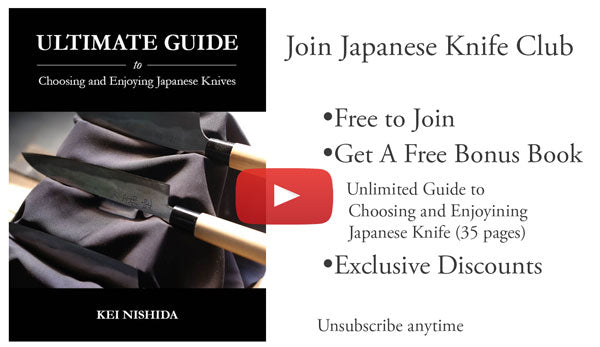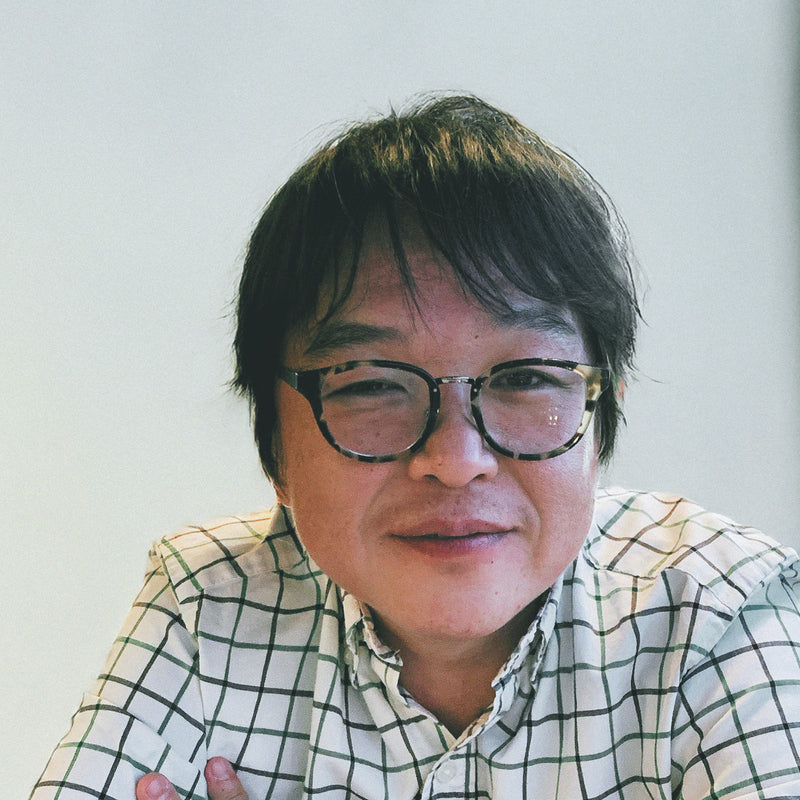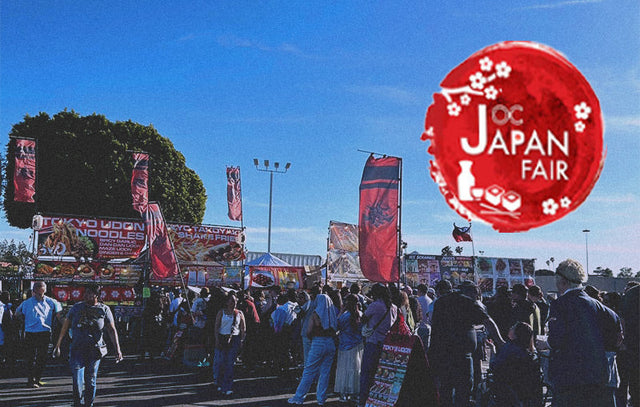The lifespan of a Japanese knife will depend on various factors, including the quality of the steel, the type of knife, and how well it is cared for. High-quality Japanese knives, such as what we carry, made from durable steel, can last for many years with proper care, while lower-quality knives may need to be replaced more frequently. To prolong the lifespan of a Japanese knife, it is important to regularly sharpen and maintain the edge and clean and dry the knife after each use to prevent rust or corrosion.
Are there any differences in the type of knife when it comes to the Japanese knife lasting long?
Yes, the type of knife can affect the lifespan of a Japanese knife. Some types of knives are more durable and less prone to wear and tear than others. For example, a chef's or utility knife may be used more frequently and may need to be sharpened or replaced more often than a paring knife or a sushi knife. Additionally, knives used for cutting harder or thicker materials, such as meat or bone, may experience more wear and tear than knives used for cutting softer or thinner materials, such as fruits or vegetables.
Moreover, Japanese knives can be divided into two main types: Honyaki and Kasumi. Honyaki knives are made from one type of steel and are forged in a traditional way; they are considered the highest quality knives. They are hard to make and expensive. They are also harder to sharpen and maintain but can last for decades with proper care. On the other hand, Kasumi knives are made by joining two different types of steel, harder steel for the edge and softer steel for the body. They are more affordable and easier to sharpen and maintain but won’t last as long as the Honyaki knives.

What about stainless steel Japanese knife?
Stainless steel is a type of steel that contains at least 10.5% chromium and is resistant to rust and corrosion. Stainless steel knives are often preferred for their low maintenance and durability. However, the quality of the stainless steel and the way it is used in the knife can affect its performance.
In Japanese knives, stainless steel is less common than carbon steel, which is traditionally used in most Japanese knives. This is because carbon steel is considered more suitable for the sharpness and edge retention desired in Japanese knives. Stainless steel knives can be harder to sharpen and may not hold an edge, as well as carbon steel knives.
However, some high-end Japanese knives are made of stainless steel and are considered as good quality knives, such as our CM line stainless steel. They are less prone to rust and corrosion and are easy to maintain. They are also suitable for people who are not comfortable with the maintenance of carbon steel knives. But, in general, the lifespan of a stainless steel Japanese knife may not be as long as a carbon steel one.

Does what type of cutting board we use matter for the lifespan of Japanese knives?
The type of cutting board you use can have an impact on the lifespan of your Japanese knife. Harder cutting boards, such as those made from granite or composite materials, can be more abrasive on the blade and cause it to dull more quickly. Soft cutting boards, such as those made from wood or plastic, may be less abrasive but can also cause wear and tear on the blade over time.
For Japanese knives, it's recommended to use wooden or bamboo cutting boards. They are less abrasive and help preserve the blade’s sharpness. Additionally, wooden and bamboo cutting boards are more forgiving on the knife’s edge and will help the knife last longer.
It's also important to note that the cutting board size should be proportional to the size of the knife you are using. Using a smaller cutting board with a larger knife can cause the knife to bend, which can affect the sharpness and lifespan of the knife.
Also, it's recommended to use a separate cutting board for meat and fish to avoid cross-contamination and to preserve the sharpness of the knife. This is because cutting through bones or frozen meat can cause more wear and tear on the blade than cutting through fruits or vegetables.

Is there a way of using a Japanese knife that will affect the lifespan of Japanese knives?
Yes, the way you use your Japanese knife can affect its lifespan. Here are a few tips to help prolong the lifespan of your knife:
1. Use the right knife for the task
Each knife is designed for a specific purpose, and it can help preserve its sharpness and longevity.
2. Use proper cutting techniques
Using proper cutting techniques, such as rocking and slicing, can help preserve the sharpness of the blade and reduce wear and tear on the knife.
3. Avoid using the knife on hard surfaces
Avoid using your Japanese knife on hard surfaces such as metal or ceramic cutting boards, as they can damage the blade.
4. Don’t use the knife to chop bones or frozen food
Knives are not designed for chopping bones or frozen food; doing so can cause chipping, dulling, or bending the knife, affecting the sharpness and lifespan of the knife.
5. Clean and dry the knife after each use
Clean and dry the knife after each use to prevent rust or corrosion, which can affect the knife’s lifespan.
6. Store the knife properly
Storing the knife properly, such as using a sheath or a knife block, can help protect the blade and prolong the knife's lifespan.
By following these tips, you can help preserve your Japanese knife's sharpness and lifespan. However, it's also important to remember that even with the best care and maintenance, knives will eventually need to be sharpened or replaced, depending on the knife’s usage and quality.
Can you be more specific about how many years a typical Japanese knife lasts?
The lifespan of a Japanese knife can vary depending on several factors, such as the quality of the steel, the type of knife, and how well it is cared for, as discussed above.
A high-quality, traditional Japanese knife made from durable carbon steel and properly maintained can last for decades with proper care. For example, a Honyaki knife (made from one type of steel) that a skilled craftsman makes can last for over 50 years with proper care, while a Kasumi knife (made by joining two different types of steel) can last for 15-20 years.
On the other hand, a lower-quality Japanese knife, or a knife that is not properly cared for, may only last a few years.
It is important to note that, even with the best care and maintenance, knives will eventually need to be sharpened or replaced, depending on the knife’s usage and quality. But, in general, a Japanese knife can last longer than a Western Knife due to the quality.
Get Free Bonus Books

Sign up for free to the Japanese Knife Club to get advice and exclusive articles about how to choose Japanese Knives, and tips and tricks for using Japanese knives.
About the author
Kei Nishida
Author, CEO Dream of Japan
Certification: PMP, BS in Computer Science
Education: Western Washington University
Kei Nishida is a passionate advocate of Japanese craftsmanship, a writer, and the founder and CEO of Japanese Knife Co., Japanese Green Tea Co., and Japanese Coffee Co., all part of Dream of Japan.
His journey began with a mission to introduce the world to the exquisite flavors of Japanese green tea. Through Japanese Green Tea Co., he pioneered the import of premium tea grown in nutrient-rich sugarcane soil, earning multiple Global Tea Champion awards. He then expanded into the world of coffee, launching Japanese Coffee Co., the first company to bring Sumiyaki charcoal-roasted coffee to a global audience.
With a deep appreciation for Japanese artistry and tradition, Kei turned his attention to one of Japan’s most revered crafts: bladesmithing. Through Japanese Knife Co., he made handcrafted katana-style knives, created by a renowned katana maker, available outside Japan for the first time. These exceptional knives embody centuries of samurai sword-making expertise, blending tradition with modern functionality for chefs and collectors alike.
Kei’s journey continues as he uncovers and shares Japan’s hidden treasures—one sip, one blade, and one legacy at a time.



















